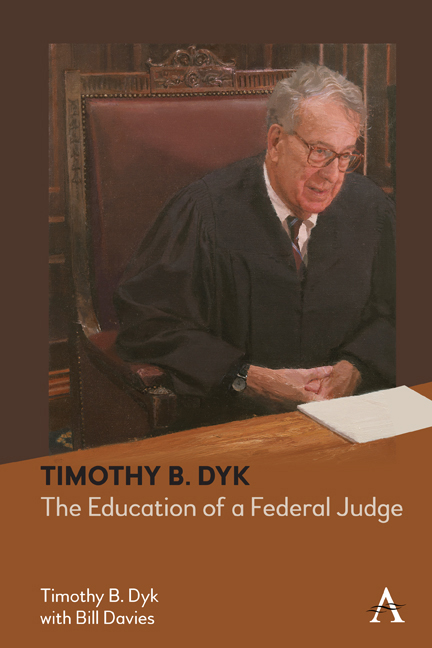Book contents
- Frontmatter
- Dedtication
- Contents
- Foreword
- Acknowledgments
- 1 Introduction
- 2 Family History
- 3 Early Life and Schooling, 1937–61
- 4 Clerking at the Supreme Court, 1961–63
- 5 The Tax Division, 1963–64
- 6 Wilmer Cutler, 1964–90
- 7 Jones Day, 1990–2000
- 8 Reflections on Changes in the Legal Profession
- 9 Becoming a Federal Judge, 1993–2000
- 10 The Confirmation Process, 1998–2000: Selected Diary Entries
- 11 Life as a Federal Judge, 2000–the Present
- 12 Epilogue
- Appendix
- Index
9 - Becoming a Federal Judge, 1993–2000
Published online by Cambridge University Press: 15 September 2022
- Frontmatter
- Dedtication
- Contents
- Foreword
- Acknowledgments
- 1 Introduction
- 2 Family History
- 3 Early Life and Schooling, 1937–61
- 4 Clerking at the Supreme Court, 1961–63
- 5 The Tax Division, 1963–64
- 6 Wilmer Cutler, 1964–90
- 7 Jones Day, 1990–2000
- 8 Reflections on Changes in the Legal Profession
- 9 Becoming a Federal Judge, 1993–2000
- 10 The Confirmation Process, 1998–2000: Selected Diary Entries
- 11 Life as a Federal Judge, 2000–the Present
- 12 Epilogue
- Appendix
- Index
Summary
Leaving Private Practice
Despite the satisfactions I found in private practice, I had always wanted to be a federal judge. This opportunity only existed for me during a Democratic administration since I was a Democrat, and Republican presidents rarely nominated Democrats. I never pursued a judgeship under President Jimmy Carter, in part because I had no significant connection to the administration (even when Cutler was White House Counsel) and in part because Carter very appropriately recognized that it was important to increase the number of women and minorities on the bench. Carter's Executive Orders required that selection panels “make special efforts to seek out and identify well qualified women and members of minority groups as potential nominees.” The assumption was that there were going to be fewer white men appointed. In the District of Columbia, in particular, Carter appointed only one white male to the D.C. Circuit (Abner Mikva who had been a congressman). The Federal Circuit did not yet exist. Although Carter made five appointments to the Federal District Court for the District of Columbia, only two were white males: Louis Oberdorfer and Harold Greene, both of whom had long records of public service. I was much too junior to compete with them for the bench.
In 1992, when Bill Clinton was elected president, it was clear to me that, if I wanted to pursue a judicial appointment, this was the time. I was getting along in years, being 55 when Clinton was elected, so I would likely be aged out if I waited much longer. In addition, continued private practice as a long-term alternative seemed problematic. Though I loved private practice, and I had every reason to think that I would be welcome at Jones Day for some years to come, the firm then had a mandatory retirement age of 66, which in some instances was extended to age 70. I knew law firms and could not conceive that I was going to be able to practice law at Jones Day after age 70. The judiciary offered the added benefit of allowing me to remain active in the law beyond normal retirement age.
- Type
- Chapter
- Information
- Timothy B. DykThe Education of a Federal Judge, pp. 157 - 166Publisher: Anthem PressPrint publication year: 2022



